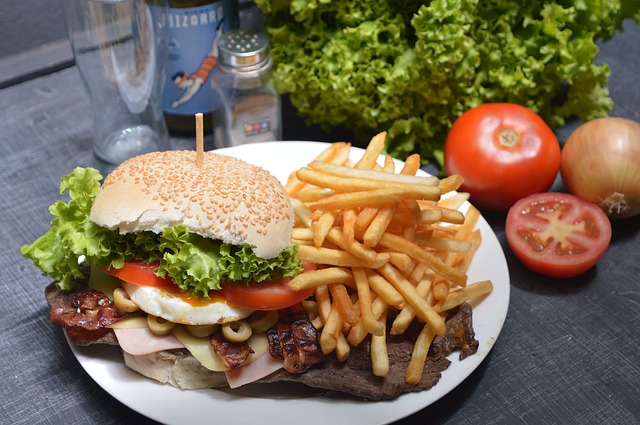A domain name is an identification string that defines a realm of administrative autonomy, authority or control within the Internet. Domain names are formed by the rules and procedures of the Domain Name System (DNS). Any name registered in the DNS is a domain name. Domain names are used in various networking contexts and application-specific naming and addressing purposes.
Domain names are organized in subordinate levels (subdomains) of the DNS root domain, which is nameless. The first-level set of domain names are the top-level domains (TLDs), including the generic top-level domains (gTLDs), such as the prominent domains com, info, net, edu, and org, and the country code top-level domains (ccTLDs).
Below these top-level domains in the DNS hierarchy are the second-level and third-level domain names that are typically open for reservation by end-users who wish to connect local area networks to the Internet, create other publicly accessible Internet resources or run web sites.
source: wikipedia
An email address identifies an email box to which email messages are delivered. A wide variety of formats were used in early email systems, but only a single format is used today, following the standards developed for Internet mail systems since the 1980s.
Unqualified, the word football is understood to refer to whichever form of football is the most popular in the regional context in which the word appears. Sports commonly called 'football' in certain places include: association football (known as soccer in some countries); gridiron football (specifically American football or Canadian football); Australian rules football; rugby football (either rugby league or rugby union); and Gaelic football. [source: wikipedia]
Fashion is a popular style or practice, especially in clothing, footwear, accessories, makeup, body, or furniture. Fashion is a distinctive and often constant trend in the style in which a person dresses. It is the prevailing styles in behaviour and the newest creations of textile designers. [source: wikipedia]
The Internet is the global system of interconnected computer networks that use the Internet protocol suite (TCP/IP) to link devices worldwide. It is a network of networks that consists of private, public, academic, business, and government networks of local to global scope, linked by a broad array of electronic, wireless, and optical networking technologies. [source: wikipedia]
Different varieties of grapes and strains of yeasts produce different styles of wine. These variations result from the complex interactions between the biochemical development of the grape, the reactions involved in fermentation, the terroir, and the production process. Many countries enact legal appellations intended to define styles and qualities of wine. These typically restrict the geographical origin and permitted varieties of grapes, as well as other aspects of wine production. [source: wikipedia]
Before the industrial revolution, fitness was defined as the capacity to carry out the day’s activities without undue fatigue. However, with automation and changes in lifestyles physical fitness is now considered a measure of the body's ability to function efficiently and effectively in work and leisure activities, to be healthy, to resist hypokinetic diseases, and to meet emergency situations. [source: wikipedia]
In 1985, James Bond popularized snowboarding in the movie A View to a Kill. In the scene, he escapes Soviet agents who are on skis. The snowboard he used was from the debris of a snowmobile that exploded. By 1986, although still very much a minority sport, commercial snowboards started appearing in leading French ski resorts. In 2008, selling snowboarding equipment was a $487 million industry. [source: wikipedia]

Sushi can be prepared with either brown or white rice. It is often prepared with raw seafood, but some common varieties of sushi use cooked ingredients, and many other sorts are vegetarian. Sushi is often served with pickled ginger, wasabi, and soy sauce. [source: wikipedia]

A hamburger or burger is a sandwich consisting of one or more cooked patties of ground meat, usually beef, placed inside a sliced bread roll or bun. Hamburgers are often served with cheese, lettuce, tomato, bacon, onion, pickles, or chiles; condiments such as mustard, mayonnaise, ketchup, relish, or "special sauce"; and are frequently placed on sesame seed buns. A hamburger topped with a slice of cheese is called cheeseburger. [source: wikipedia]

Souvlaki is a popular Greek fast food consisting of small pieces of meat and sometimes vegetables grilled on a skewer. It is usually served with grilled bread, or in a pita wrap with garnishes and sauces, or on a dinner plate, often with fried potatoes. The meat usually used in Greece and Cyprus is pork, although chicken, beef, and lamb may also be used. [source: wikipedia]

In the Mediterranean, ice cream appears to have been accessible to ordinary people by the mid-eighteenth century. Ice cream became popular and inexpensive in England in the mid-nineteenth century, when Swiss émigré Carlo Gatti set up the first stand outside Charing Cross station in 1851. He sold scoops in shells for one penny. Prior to this, ice cream was an expensive treat confined to those with access to an ice house. [source: wikipedia]









Product naming is the discipline of deciding what a product will be called, and is very similar in concept and approach to the process of deciding on a name for a company or organization. Product naming is considered a critical part of the branding process, which includes all of the marketing activities that affect the brand image, such as positioning and the design of logo, packaging and the product itself.
source: wikipedia
headwords
current words
obsolete
derivatives